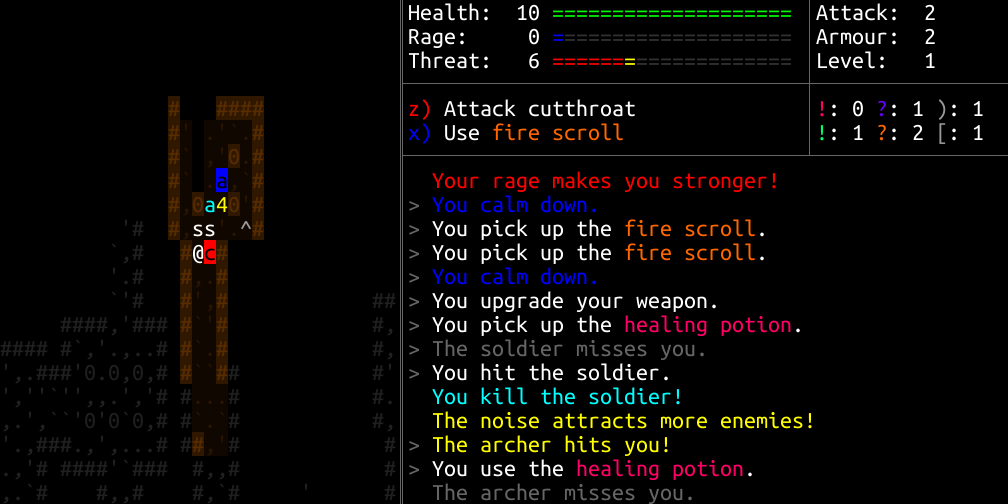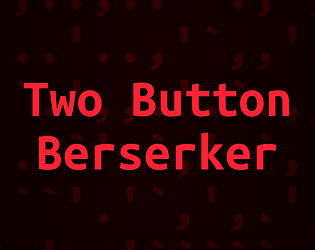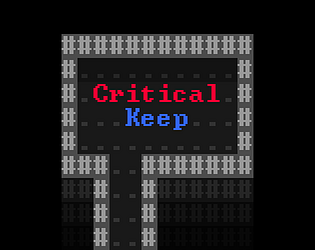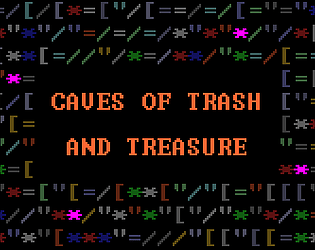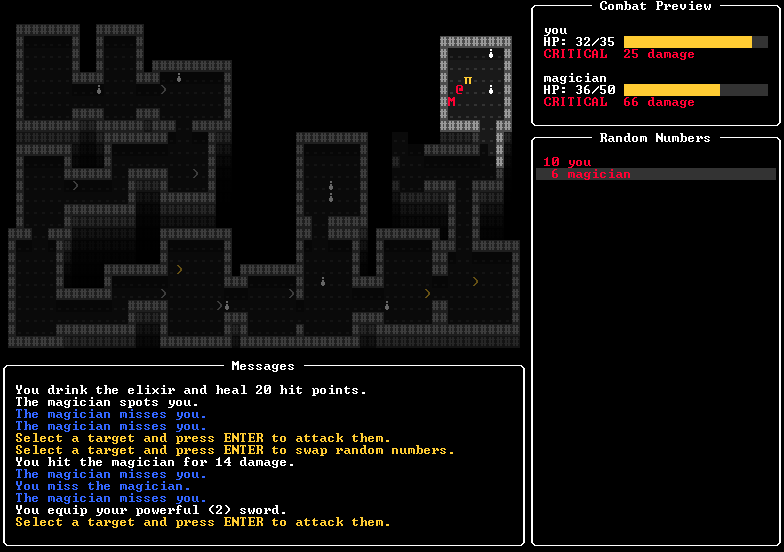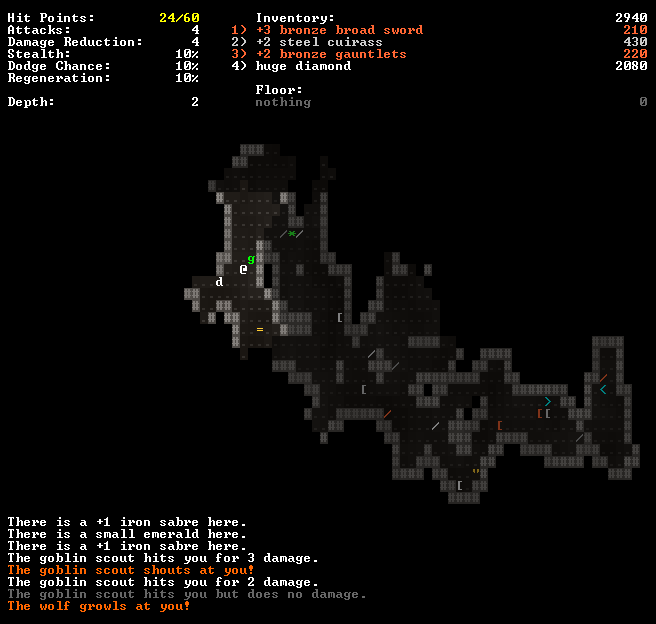Started Sunday 01/03/2020 10:00 GMT. Submitted Saturday 07/03/2020 about 14:30 GMT.
Two Button Berserker is a dungeon crawler with only two keys. What they do depends on the situation:
- Use Z to fight, explore and dive deeper into the dungeon.
- Use X to use scrolls, potions and equipment, increasing your likelihood of survival.
The gameplay is based on classes like the Berserker in Crawl, which mainly alternates between two states: auto-fighting and auto-exploring, and realizing that you're in danger and need to use an item or ability or something.
This is a game where each of those states is mapped to a key. The catch is that you get stronger the more you press the auto-attack button. If you use an item, you'll calm down and lose that strength, so you might end up in more danger than before!
I used Python again, but this time I used BearLibTerminal and Esper. Both libraries were really nice to work with, and the executable is smaller because it doesn't depend on NumPy. I reused the map generator from Critical Keep and adapted it for a bigger map, as this is my first game where the viewport tracks the player. Code quality is not where I would have liked it, but I may come back and clean it up in a post-7DRL release.
